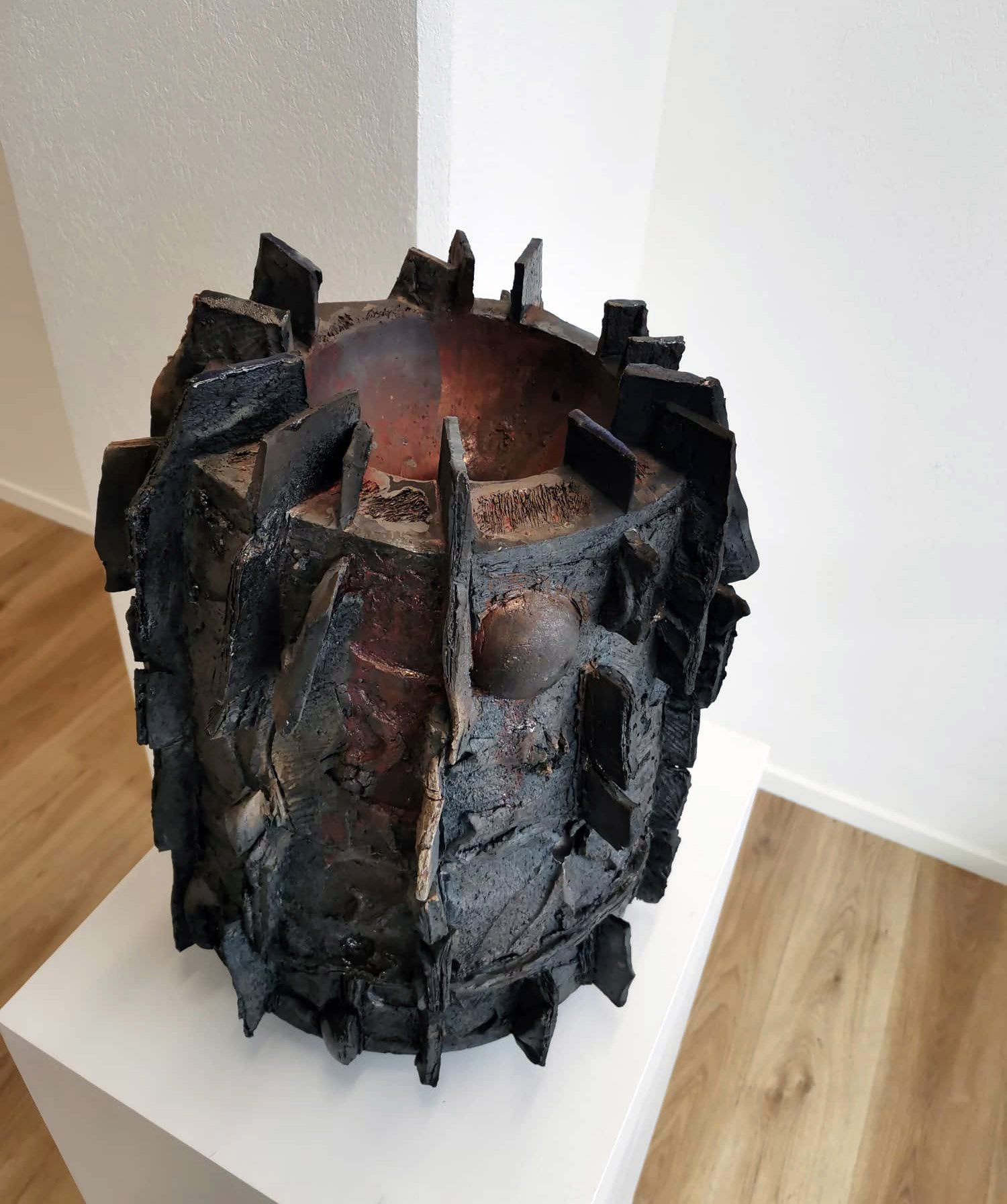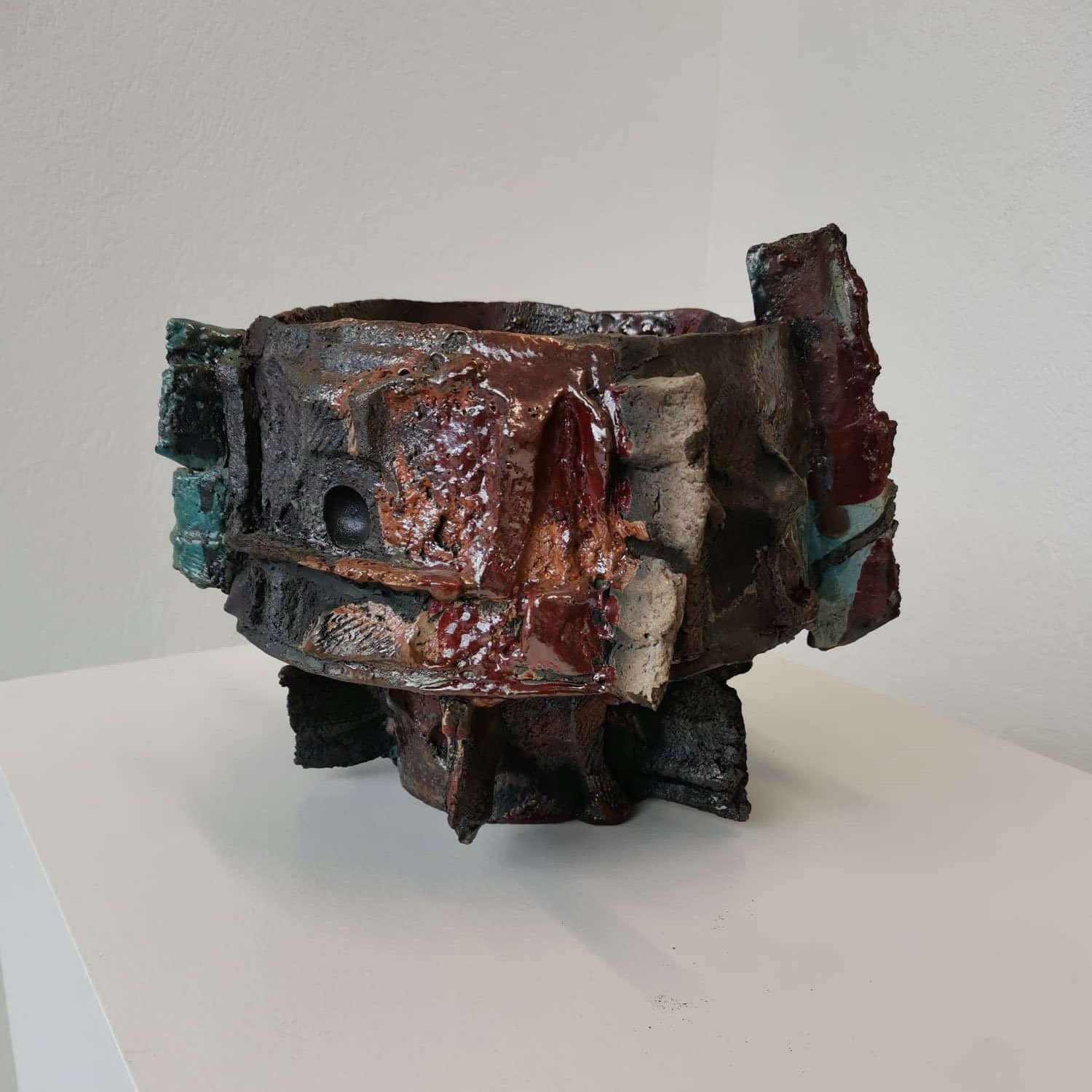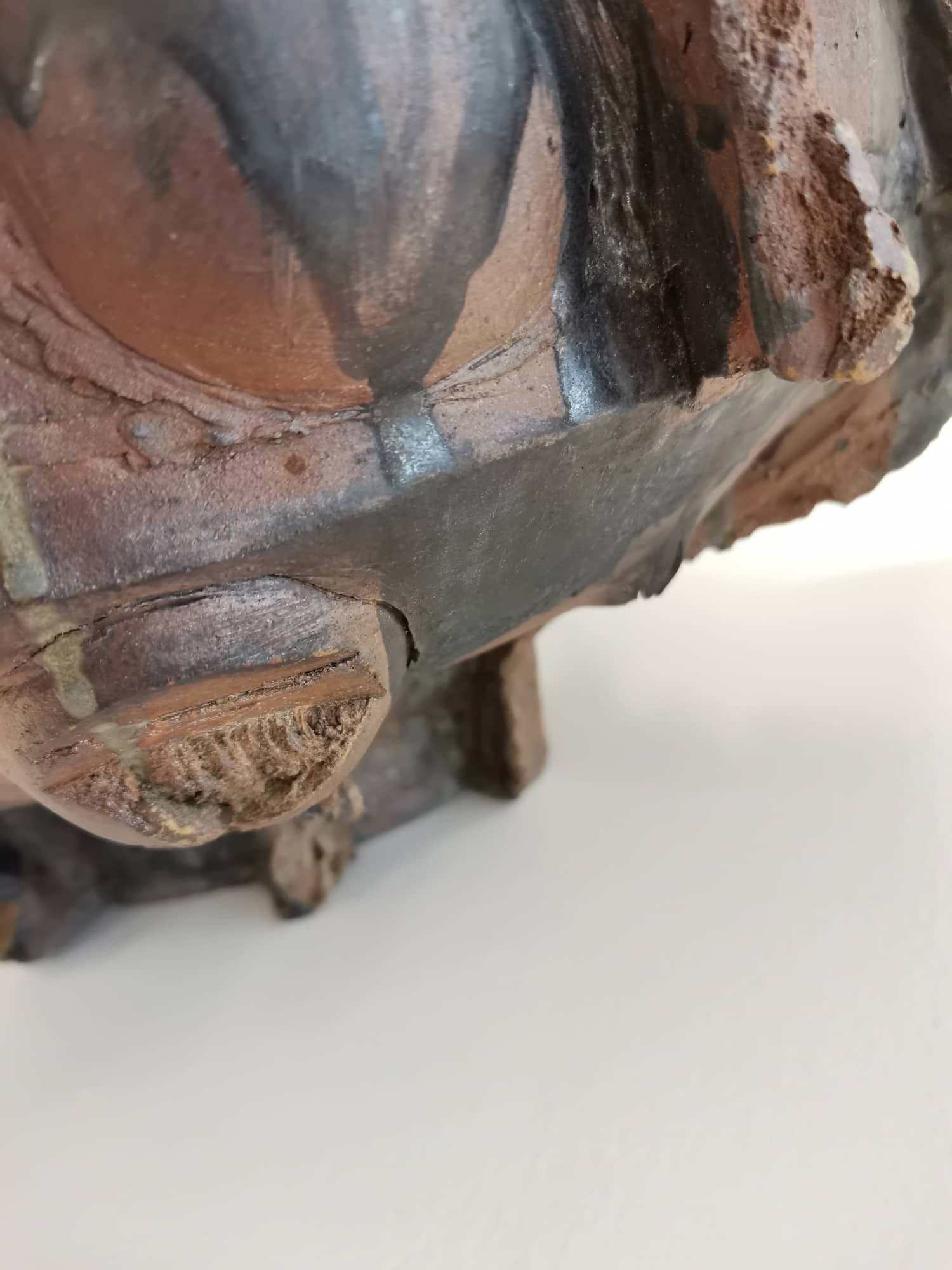Fission
Raku Fired Ceramic
33cm wide x 45cm high
POA
Fusion Vessel, earth fused together
Raku fired ceramic
28cm wide x 22cm high
POA
Rūaumoko 2, the moving earth vessel
Raku fired ceramic
34cm wide x 22cm high
POA
Visceral
Raku fired ceramics
45cm wide x 30cm high
POA
Be in the Light
Ballpoint-pen, water-based colour pencil & acrylic paint
61cm x 84cm
$ 3000
Meditative State
Ballpoint-pen, water-based colour pencil & acrylic paint
61cm x 84cm
$ 3000
Numinous
Raku Fired Ceramic
28cm wide x 45cm deep x 53cm high
POA
Tumatauenga, the god of war
Ballpoint-pen, water-based colour pencil & acrylic paint
59cm x 30cm
$ 950
Whenua Vessel 2
Anagama fired ceramics
42cm wide x 21cm high
POA
Mauri Ora
Ballpoint-pen, water-based colour pencil & acrylic paint
59cm x 29cm
$ 950
He Tangata, the people
Ballpoint-pen, water-based colour pencil & acrylic paint
59cm x 33cm
$ 1200
The Transformation of Hine-tītama into Hine-nui-te-pō
Ballpoint-pen, water-based colour pencil & acrylic paint
120cm x 107cm
$ 4700
Placebo
Ballpoint-pen, water-based colour pencil & acrylic paint
35cm x 49cm
$ 1800
To be numinous is to have a spiritual quality, the presence of a supernatural, mysterious divinity. Each of these works is numinous in its own right.
“Another important factor is the strong belief in spiritual support and influence. Through such processes, the work of one’s ancestors from the distant and immediate past are brought to the Ωfore and recognised as an important part of present endeavours. History is given meaning in the present.”
- Dr Rangimārie Rose Pere (Tūhoe, Ngāti Rua pani and Ngāti Kahungunu),1994
The presence of a divinity, a sacredness, and our resulting experience of its mysterious or majestic presence, whether it inspires dread or fascination, can’t always be measured or quantified within a modern context. This has moved Keith to try to emulate the unquantifiable, that numinous spiritual awareness, in his work.
Keith’s journey of spiritual belief and content within his art practice and life has been both a fortuitous and ongoing development - as he connects to his own spiritual wellbeing and the divine presence of his tīpuna (ancestors), so too does his work take on its own divine presence. Numinous is the result of a decluttering of his own human spirit, if you will. It began as a private practice - divining the form his spiritual wellbeing will take, while also divining the forms these vessels and drawings take. And while that private practice now becomes public, whether we collectively believe in something beyond ourselves or not does not concern Keith. These works will always be reflective of his own journey to acknowledge and connect with something beyond himself.
“The nightmare of materialism, which has turned the life of the universe into an evil, useless game, is not yet past; it holds the awakening soul still in its grip.”
- Wassily Kandinsky, 1947
-
In this post-modern, post-internet age, the glocalisation of images and information has expanded significantly, but at what cost? Where Western politics and religious orthodoxies have directed humans into an addictive function, and where contemporary society “manifests” with materialism and monetary values, where society now thanks god for the abundance of their wealth, it is here that we find we are no longer connected to nature’s rhythm, disrupting our wairuatanga and spiritual footprint in the process. These works, with their earthen materials and raw forms, represent an attempt to reconnect with the whenua, to reconnect with nature and its numinous qualities and to, therefore, heal one’s foundering wairua.
Of course it is possible these works could be considered artefacts which merely resemble spirituality. However, if Keith applies spirituality within his art practice, spiritual concepts and actions are only half the battle - it’s also the beliefs and practices of the spiritual soul which give these works their air of spiritualism. For when Keith’s imagination and soul are open, his observation of the ordinary or the mundane eventually leads him to the perception of the extraordinary and the numinous. The meditative state of the practitioner when revealing these works - breathing life into them, unearthing them from within the non-linear depths of time, past, present and future - is clearly visible to the viewer. The hope, then, is that through examination of these works we may also begin to recognise the numinousness of the world around us.
- Essay by Rosie Dawson-Hewes
About
Tracy Keith, Ngāpuhi, raised in Tokoroa, Keith talks about his memories of the influence the pulp & paper timber industry significantly affected the resident’s way of life. To signal this experience, he imprints abstracted shapes on his works that represent symbols such as bones and sockets. Keith reflects “the whakapapa (genealogy) of industry is in our blood. People don’t always live by their tūrangawaewae (ancestral home), because they follow work, which can lead to the deterioration of culture.” This is one example of many towns in New Zealand that were established in order to serve a major industry like paper mills, smelters and freezing works. Their largely Māori and Polynesian workforce becoming the local inhabitants who often relocated there for work which some have remained, but most have moved on to other industries.
-
Keith’s works also appear to embody the heavy industrial foundations these towns grew from. Their crude appearance reflects the stresses and extremes that working in these factories and living in these communities brought with them. Many of his vessels show cracks and ruptures from the firing process – physically representing what Keith describes as the ‘breaks’ that many families had from their ancestral lands in order to relocate for work opportunities.
An artist who works predominantly in raku clay, Keith stretches, pushes and molds his forms combining an organic sensibility with shapes and embellishments that at times resemble machine parts, the artist says: “The uneven surface of each piece references the weathered and layered structures of the land and industry as an intrusive entity.” The molten glazes and metallic hues give each vessel its own character and reflects the relationship between industry and whenua (earth).
Similarly, the artist adapts his understanding of whakapapa to consider the history of clay, contrasting the ancient Japanese firing technique of raku with the newer methods of ceramic artists such as Yo Akiyama (who studied under Kazuoa Yagi of the Sodeisha group, Japan) and Peter Voulkos (who taught at the Otis College of Art and Design, U.S.A.). Together, his influences show Keith’s interest in being led by the physical qualities of clay, and how these can be used to represent his experiences of te ao Māori (the Māori world view) within current times.































